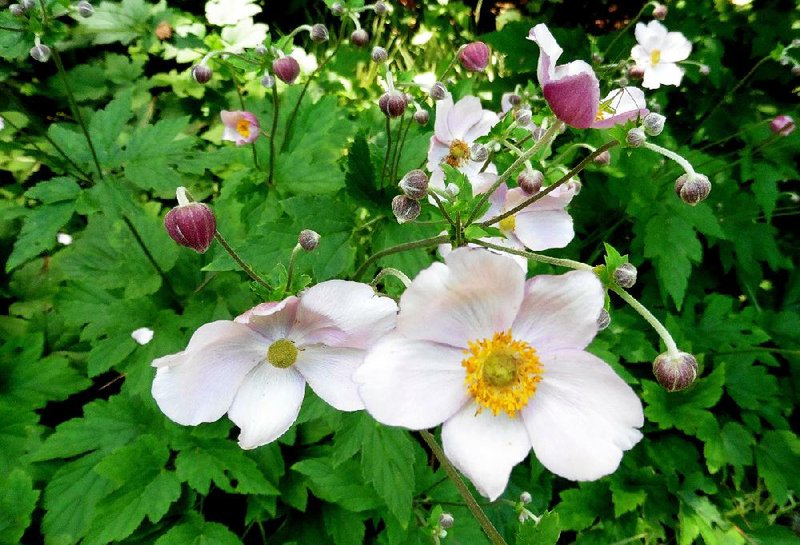OCTOBER
• The weather has been really dry. Trees are shutting down much earlier than normal; leaves have been falling for more than a month, and spring-blooming plants have set their buds for next year.
• Make sure your plants are happy and healthy before they head into winter. Lower temperatures don't make water any less important. Continue to water at least an inch per week, unless we get some rainfall.
• Fall vegetable transplants are available for planting. From the more common broccoli and cabbage to bok choy and purple mustard, there are many choices. Consider using some of these transplants for edible landscaping instead of planting ornamental kale and cabbage.
• It's time to seed lettuce and radishes and to plant garlic. If you extend your garden into winter with row covers, you can plant successive crops. Monitor for pests, since insects are still going strong, and weed often. Water will be critical to get these new plants established.
• Along with mums, pumpkins and gourds are a quick way to add color to the fall garden that can last for months. Choose blemish-free fruits with a strong stem.
• Pansies come in a wide range of colors, some with faces (the dark blotches) and some without (clears). Cool Wave pansies are more spreading, while "panolas" are a cross between pansies and violas. Violas are smaller in size but also perform beautifully in our gardens.
• Many perennials are beginning to die back or set seeds. If your spring- or summer-blooming perennials need to be divided, now is a great time. By doing the work in the fall, we allow the roots to grow while the tops are dormant. They will be well-established and ready to take off by the next growing season.
• It's also a great time to plant seeds of wildflowers and many perennials, including poppies, purple coneflowers, columbine, foxglove and the annual larkspur, Texas bluebonnets, bachelor's buttons and cornflowers.
• Flowering bulbs can be planted through the end of the year. From early crocuses to daffodils, hyacinths and tulips, these spring bloomers need a minimum of 12 weeks of cool weather before the already formed bud within them can stretch and elongate to bloom their best. Choose large, blemish-free bulbs. If you can't plant right away, store them in a cool place. An otherwise empty hydrator drawer in the refrigerator can be used to chill them before planting, but that isn't necessary.
• Start moving houseplants inside. They'll have a much easier adjustment if the inside and outside weather conditions are similar. Don't wait for really cool weather, or the shock will be too great, and they will drop a lot of leaves. Check the plants for insects before moving them in. Also, cut back on watering. Give them bright light, but don't be alarmed if you see some leaves dropping.
• Practice good sanitation in the garden. As plants begin to play out, pull them up. If they were diseased, discard them; if not, add them to the compost pile.
• Weeds are continuing to grow and if you allow them to bloom and set seeds, you will have more next season. Summer weeds are nearing the end of their season, while winter weeds are coming on. Use a good hoe, hand pull or mow and then mulch.
PLANT OF THE MONTH
Japanese anemone (Anemone x hybrid) is a lovely fall-blooming perennial. The plants grow best in full morning sun with afternoon shade but will also take dappled sunlight all day.
In full sun, the leaves tend to scorch a bit.
The plant is not tolerant of drought since it likes even moisture, but it won't tolerate wet feet -- especially in the winter. But the plant is deer resistant, since it is poisonous. Few pests bother this plant.
This member of the ranunculus family comes in white or pink, with single- or double-flowered varieties.
It can be a bit slow to get started in the garden but if the conditions are right, once established, it can occasionally become too happy and begin to spread.
A welcome addition of color in the late-season garden, anemone is a reliable, long-lasting bloomer. It dies back to the ground in the fall after a killing frost. Divide as needed in the spring when the plants reappear.
Janet B. Carson is a horticulture specialist for the University of Arkansas Cooperative Extension Service.
HomeStyle on 10/03/2015
